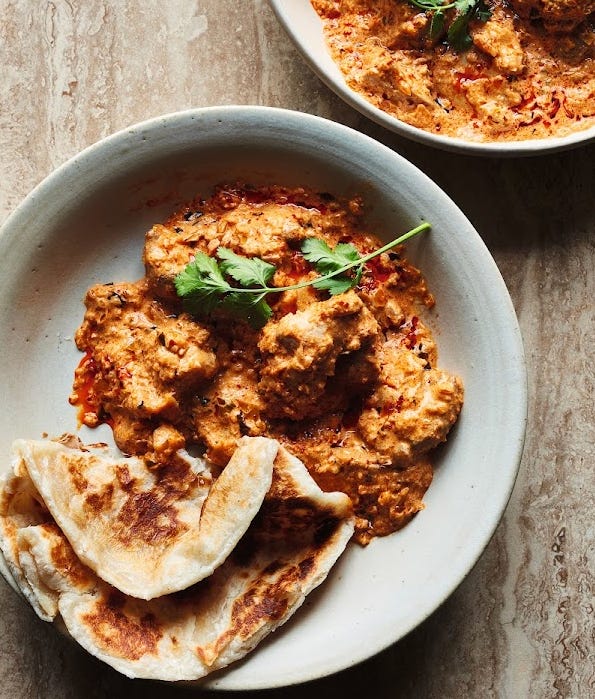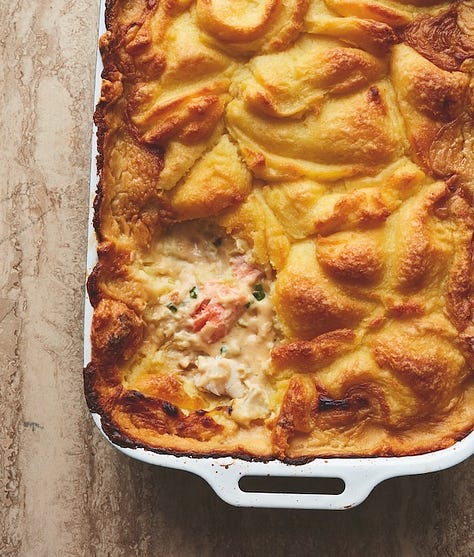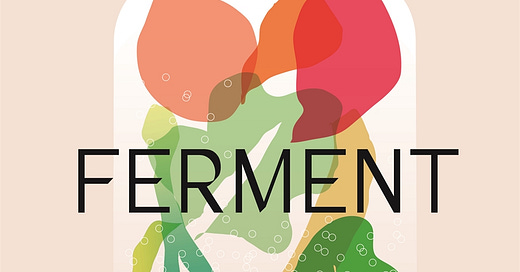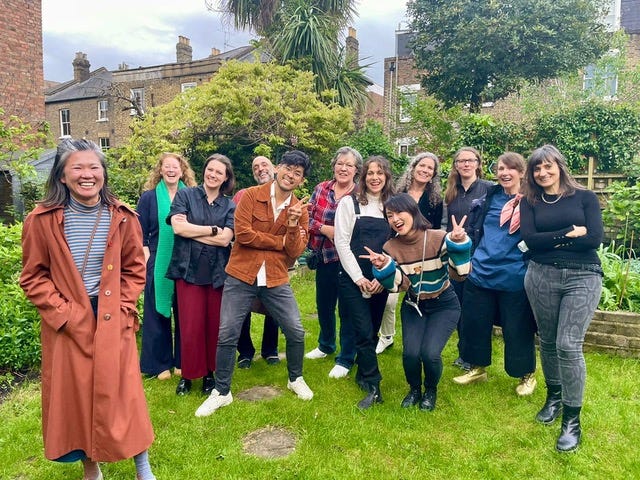Interview with fermenter Kenji Morimoto
His new book FERMENT: Simple Ferments and Pickles and How to Eat Them 🚀 launches soon
Today I am excited to announce that there is another inspiring pickling book about to hit the shelves; well that is if you are in the UK and Europe. Those of us in the US have to wait until August. (Warning: Photos in this post will make you hungry.)
Just a little over a decade ago our book Fermented Vegetables came out, at the time the modern fermentation movement was nascent. Fermentation, as a domestic art to be done in home kitchens, had been mostly forgotten, and was relegated to niche topics. For sure, books included recipes for ferments as part of a cuisine. But fermentation specific cookbooks included Sandor Katz’s work, Alex Lewin’s Real Food Fermentation, and a handful of others. In other words, fermentation books did not hog space on bookshelves. Over the years there have been dozens written, so much so I can’t keep up, or even pretend to have read them all. (I do try to keep up though.) I love watching this genre grow and I have been lucky to see so many people add to the cannon. I am especially excited by some of the books that are coming out this year.
My friend Kenji Morimoto’s book FERMENT: Simple Pickes and How to Eat Them (US link) (UK link) (feels extra special because I have been talking with Kenji about all things fermentation since his early days on Instagram. It is available for pre-order. (Pre-order is so important for authors.)
I met Kenji in person when I was in London for a few days in the summer of 2023 as part of the Symbiosis Tour–a collaboration with Mara King, Jo Webster and so many fermenters in the UK and Ireland. Kenji surprised me by showing up at one of the events just to meet and give me a sweet card despite having a full day otherwise. We were able to chat more a year later when Pratap Chahal @thathungrychef hosted an amazing super club, themed plant-based fermentation, at his house that coincided with my visit. It was such delight to meet Pratap and many other members of the UK’s Fermenter’s Guild. That time I was able to chat with Kenji at length about all the cool things he’d been working on, like this book that was just in its early stages.
So without further ado, here is a written conversation between Kenji and I to introduce you to his work.
KS: Kenji, you reached out to me early on in this fermentation journey that has gone from an exploration of family flavors to something much bigger—like this book for one. Can you tell us a bit about your journey? If possible, could include that pivotal moment when you realized there was magic in these foods.
KM: I’ve always preserved - from an early age for our annual Oshougatsu (Japanese New Year’s) I made pickles, primarily easy asazuke and amazuzuke varieties. I remember - probably at the age of ten - when I bought my first plastic pickle press from a Japanese store.
Pickling was really magical to me: It’s transformative, tactile, and was also something I could fully “own” in my family’s busy kitchen where everyone had a bit of a role as to who did what, especially for the big holidays.
Fermentation came a bit later in life. When I graduated from university in the US, I moved to Mumbai for a few years and quickly found out I couldn’t easily access kimchi, something I had grown used to eating quite regularly. It was there that I started to adapt recipes to the ingredients I could more easily access, as well as learning how an environment, such as the heat of the Mumbai sun, impacts the speed at which something ferments. This really lit a passion in me, not just in fermentation, but also how locality influences recipes and traditions, a theme very close to my own family’s immigrant story.
As a passionate home cook, and setting roots down in London, I then really jumped down the rabbit hole of fermentation and it was due to the pandemic (and a badly timed resignation from a job) that I had the space - mentally and creatively - to pursue these passions and document them online. And I suppose, social media has been kind to me and the rest is history!
KS: I love that you were welcomed in your family’s busy holiday kitchen and you loved it and owned your place in it then and it is very much part of your now. I don’t want to go on a tangent here but I do want to quickly say I think people don’t realize how important including children in creation of food is for life long love and enjoyment of food.
Speaking of being kids in the kitchen, you and I are both third culture kids and I think we have explored our own identities through our exploration of flavors through fermentation. How has your deep dive into partnering with microbes connected you to places and people?
KM: It’s a common language we all share regardless of where we’re from or where we live and I think there’s something incredibly beautiful about that. As someone who has had a privileged life and been able to travel quite a bit, food is always a source of common ground in building connections or having conversations. But more so than that, the memories driven by fermented, pickled, and preserved flavours are often the foundation of it all, reminding us of our origins, our grandparents, and can often drive - quite literally and metaphorically - how we live our lives.
KS: My German family thinks teaching people how to make sauerkraut is incredibly funny—I seriously think that they imagine me out here in the mountains of Southern Oregon stomping around on shredded cabbage in an open barrel, bare feet and all. What does your family think about your embracing and expanding on your cultural traditions?
KM: My parents love it but I’m sure if my grandparents were still alive they would find it all quite funny. Why make shoyu and miso if you can get such good versions at Japanese grocery stores? It’s a fair point but I also acknowledge that being able to spend time on these cultural traditions comes from a place of privilege. I want to believe they’d be proud, however, fermenting everything, but specifically miso, has been a way that I’ve really reflected and connected with my Buddhist roots and as the world continues to change and history is so easily forgotten, it’s a way that I like to celebrate the legacy handed down by them.
KS: Beautiful. I am sure they would be proud. And miso, yes, what a tangible way to experience so many of the teachings of Buddhism. Please tell us about your book?
KM: FERMENT, in many ways, is a traditional cookbook - filled with beautiful photography and stories - focusing both on fermentation and vinegar based pickling but equally important, the recipes that utilize these ingredients. On the preservation side, I focus on lactofermentation, kimchi, vinegar based pickles, miso, kombucha, and cheong - the basics but also some of my favourite twists on the classics. My angle is that I very much approach preservation within a home kitchen set-up, driven by the fact that our ancestors successfully preserved without any technical set-ups, so very much focusing on learned intuition but also reinforced and influenced by my global background: being a Japanese American now living in London.
I also want to think of it as a celebration of the confluence of cultures that has made me and the connections I’ve made along the way. I am indebted to so many people in this glorious fermented community whose knowledge and books were truly formative. I was actually gifted your “Miso, Tempeh, Natto” book by a fermentation friend in the UK as I started my own koji journey and that book, more than any others, gave me the confidence to start my own exploration.
KS: First, thank you 🥰. I am so honored when my books make it into kitchens and become part of a fermentation journey in any stage. (The biggest compliment I think is actually seeing your cookbook full of the patina of food and marked up with notes and bookmarks. I hope that for your book.)
What I love about your book is that it is approachable. Sometimes people are daunted by preservation but you entice the reader with recipes that are both visually beautiful, interesting and tasty, but not overwhelming or difficult. I see many of your recipes as a gentle invitation to preserve some food but you don’t leave your reader hanging. You offer recipes that show ways that these preserved foods can then be used.
The Ferment section of FERMENT includes chapters on: Lactofermentation, Kimchi, Miso, Pickling, Kombucha, and Cheong.


The Recipes section includes: How to cook with pickles and ferments, Starters, Mains, Desserts, and Cocktails.


KS: I know clichéd question, but everyone always wants to know what is my favorite ferment. I am sure I am not the first to ask you, and I know I won’t be the last, but what is your favorite, go-to, always-have-on-hand comfort ferment?
KM: Miso. Always and forever! Like many of you, I tend to make miso in large batches and often at inflection points in my life - beyond it just being such a delicious ingredient, it symbolizes so much for me: a lesson in impermanence, trusting the process, and a meditation in intention.



KM: What is the role you feel you play, or endeavor to play in the global fermentation renaissance?
KS: I love to inspire and share what I have learned in hopes that people will find more joy in their lives. I believe good food makes us feel good, especially when we are sharing it. Through the past decade I have been told so many beautiful stories about how fermented foods have profoundly changed people’s lives. I see my own role continuing to evolve and it is my greatest pleasure to support individuals in their own communities or online spaces to reach more people.
KM: How do you envision the future looking?
KS: Fermentation means different things to different people. I see it a bit like the center of a wheel with spokes fanning out in many directions.
There are the people like you and I who engage with fermentation for flavor and fun, and who are for the most part engaging in ancient methods, or variations on that. Even this is a huge subset of individuals that includes folks from all corners of the planet, home cooks and gardeners, traditional practitioners, to top level chefs.
There are also people who are increasingly interested in these foods for gut (and overall) health. They may never want to make their own but will support makers. Thus far most of the makers have been small but I do see this changing as more of the larger food producers are creating fermented foods, especially beverages like kombucha, to take advantage of the interest.
Without getting too heady here, I do want to say that at the same time that the science around our microbiome and our absolute dependence on microbes for our functioning body is exploding, so is the science about how microbes can be used in industry. For now, I will stick to the food industry, but biodigesters (basically huge fermenters), are being used to try to figure out things that feel, to me hopeful, like solutions to help with food waste becoming nutritious products. However, at the same time I am seeing fermentation used to create products and ingredients that we wouldn’t come upon naturally that are creating ingredients for ultra-processed foods. As with most things I think we need to pay attention to the nuance as we are at a point where we can’t just assume because it says “fermented” it is natural in a way that our body recognizes.
That said, I think that this interest in fermentation, especially grassroots fermentation, is continuing to grow. When I first started engaging with the public about fermentation it was looked at as a trend or a fad. I think we are beyond that and it is my hope that everyone on this planet will engage in food fermentation because I strongly believe this practice connects to nature and ourselves as part of nature.
So I see it as hopeful. Thank you, Kenji, this is such a great question. Now you, how do you envision the future?
KM: I think it’s so exciting - Fermentation will continue to grow and become mainstream and I’m a believer that a rising tide lifts all boats (or a rising brine lifts all microbes?). So I’m excited to see what connections are made, from practices and processes to ideas and creativity. I truly believe we’ve only seen the tip of that iceberg!
KS: What is next Kenji, or What are you working on now?
KM: I left my full time job at the end of last year and am now attempting to focus on food fulltime - creating videos online/playing the content creator game, developing recipes for print media, and hopefully writing a second cookbook.
KS: That is great, Kenji. Congratulations on making your dream a reality. Where can we find you, your work, and your book—FERMENT?
KM: You can find my work on Instagram here and you can buy my book pretty much anywhere books are sold!
In the UK, it’s being published on April 24th and most UK retailers have free international delivery. The US edition is being published by a US publisher on August 19th as well. I am also in the process of launching my website - so join me on Instagram so you will know when it is live.
KS: Thank you Kenji for joining us here. I am super inspired by all of the inspiration that you offer to fermenters—new and seasoned—I myself can’t wait to make your Kimchi Fried Rice Comté Arancini.
More books 📚
If you enjoyed this interview you might also enjoy the interview I did with Aaron Adams and Liz Crain when their vegan fermentation book Fermenter came out. (Recipe included.) Another fun interview talks to authors of the series Preserved, Darra Goldstein, Cortney Burns, and Richard Martin and includes recipes for Black Salt and Fermented Honey Charoset. If you didn’t see the recent post with James Read about his book Cabbages & Kimchi I am sure you will enjoy for the fun facts.









Great interview! As per usual, you have questions and comments that only you would ask…♥️
That Kimchi sorbet .... very curious, haha!
Kenji must be doing something right because he always pops up at the top of my feed when I open instagram to take a photo (smaller file sizes!!) and meta knows that if it serves me up something fermenting I'll pause and watch a bit. Great interview, thank you!